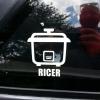Hypertune V2 Manifold Plumbing - Coolant Piping Manifold
Announcements
-
Similar Content
-
Latest Posts
-
Hey there rob, just looking at the car. I’m quite interested in buying if your still selling
-
He's already pulled the motor, and I believe sent it to the builder. TurboTaipan has a cool build thread in the projects area you can follow on for more updates too
-
Holy smokes brother. If you get there before me, let me know if that was manageable with a hone. I still haven't done anything with mine and probably won't until I get the car MOT'd later this year so that I have another 2 years to do what ever needs to be done. I am at 86.5 now so at least I have the 0.5mm to go up from where I am, but that means new pistons at the very least. Honestly, might consider a stroker at that point. Cheers
-
It's the adhesive holding the ceramic wheel to the shaft the fails on 90% of them.
-
By joshuaho96 · Posted
Foreign debris, physical shock, boost leak, could be anything honestly. The danger in taking all the timing out of a tune/hitting the R&R corner is that even if the engine doesn't detonate your turbo is taking a lot of abuse from high EGT. Also, even if nothing goes wrong it is a journal bearing that is spinning at 100k RPM on boost. Eventually it goes through enough cold start/pressure cycles to wear it out.
-




Recommended Posts
Create an account or sign in to comment
You need to be a member in order to leave a comment
Create an account
Sign up for a new account in our community. It's easy!
Register a new accountSign in
Already have an account? Sign in here.
Sign In Now